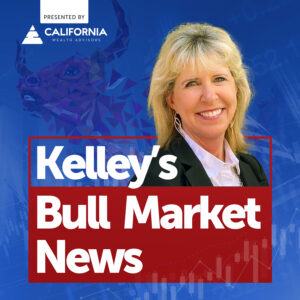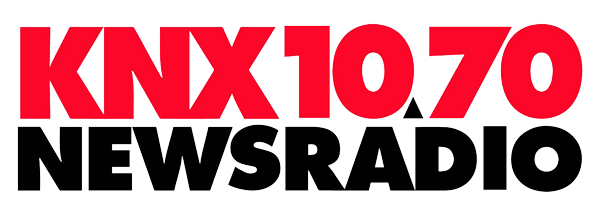THE QUARTER IN BRIEF
Financial markets abhor uncertainty, and Russia’s invasion of Ukraine added new uncertainties to a market already wavering from accelerating inflation and the prospect of higher interest rates. After a year of strong economic growth and solid stock market returns, heightened inflation and the unclear pace of monetary policy tightening triggered market volatility right from the start of the new year. The potential of rising interest rates propelled bond yields higher and hurt stock valuations, especially the previously high-flying, high-growth technology names.
Stock market weakness continued into February as investors worried that the Fed’s slow response would lead them to address high inflation with more rate hikes than investors initially anticipated. When Fed Chair Jerome Powell announced plans to shrink the Fed’s balance sheet, the fears of a more aggressive monetary policy grew.
Financial markets were roiled by the lead-up to the Russian invasion of Ukraine, with prices becoming more volatile as investors reacted to the building tensions on the Russian-Ukrainian border and momentary glimpses of a potential diplomatic solution. Stocks slumped on news that hostilities had started as investors assessed the global economic impact of the invasion and the economic sanctions that followed. The flight to safety sent bond yields lower, halting, at least temporarily, the march toward higher yields.
In the final month of the first quarter, stocks continued to be volatile as intensifying hostilities in Ukraine added to inflation and supply-chain concerns. However, by mid-March, stocks staged a strong turnaround that reversed much of the quarter-to-date declines as investors welcomed the clarity on monetary policy following the Federal Open Market Committee’s March meeting and encouraging economic data.
Overlooked by these headline concerns, corporate profits for the fourth quarter exceeded market expectations. With 95% of S&P 500 constituent companies reporting, 76% reported a positive earnings surprise, posting an average earnings growth rate of 30.7% in the fourth quarter. This earnings momentum may likely moderate in the first quarter to a 4.6% increase and 8.5% for the full year.1
THE U.S. ECONOMY
In the fourth quarter, the U.S. economy grew at a robust annualized rate of 6.9%, led by strong retail sales, services, and exports. The economy overcame several substantial headwinds, including a surge in Omicron infections, accelerating inflation, continued bottlenecks in the global supply chain, a labor shortage, and the anticipation of a tighter monetary policy.2
The solid economic performance in the fourth quarter helped drive the unemployment rate from 4.8% in September to 3.9% in December, a favorable trend that carried over into the first quarter of 2022, with the unemployment rate falling further to 3.8% in February.3
The first quarter’s economic expansion is likely to be modest due to the drag of Omicron, but the Ukrainian invasion may further dent economic growth. The Federal Reserve Bank of Atlanta, which attempts to track GDP growth in real-time, reported that its “GDP Now” forecasting model lowered its nearly 2.0% Q1 GDP pre-invasion annualized growth rate estimate to 1.3% as of March 31, 2022.4
The Atlanta Fed is not alone. In one survey of economists two weeks after the invasion, findings lowered the average of 14 earlier forecasts by 0.3 percentage points. The first and second quarters felt the most significant impact of the projected economic deceleration before stabilizing in the year’s final two quarters.5
Elevated inflation was a dominant concern throughout the quarter. The cost of consumer goods jumped 7.9% year-over-year in February, the most significant increase since July 1981. This boost comes atop year-over-year increases in the Consumer Price Index of 7.5% in January and 7.0% in December 2021.6
With lower economic projections ahead, the Fed set upon a new course in its monetary policy with the end of asset purchases and the implementation of a 0.25% interest rate hike, the first such increase since 2018. The Fed also signaled the possibility of a total of seven quarter-point rate hikes this year and three or four next year to combat inflation and its intention to announce a plan for reducing its $9 trillion balance sheet.7
In the quarter to come, economic growth will be challenging in an uncertain geopolitical landscape, further interest rate hikes, the persistence of elevated inflation, and supply-chain stresses.
GLOBAL ECONOMIC HEALTH
The impact of war in Europe has led to downward revisions in the 2022 growth estimates for major global economies. Further supply chain disruptions and more significant inflationary pressures are likely to weigh upon economic activity.
The economic repercussions of Russia’s invasion of Ukraine are widespread. Commodities prices, from oil and agricultural products to natural gas and base metals, may stay elevated for the foreseeable future. This sustained elevation may be due to the combination of sanctions, the destruction of infrastructure, and supply uncertainty, resulting from the disruption of supply chains, as land- and sea-based trade routes have become impeded or completely closed down.
While the measure of the invasion’s economic impact remains fluid and imprecise, according to the Economist Intelligence Unit (EIU), a British-based economic research and analytics group, economic growth in Europe may slow down by nearly 50% from a pre-war estimate of 3.9% to about 2.0%. The impact on eurozone countries may be less severe, with estimates revised from 4.0% to 3.7%. EIU also projects that global growth will be shaved by 0.5 percentage points, from 3.9% to 3.4%.8
The United Kingdom is facing a similar outlook. The British Chamber of Commerce downgraded its forecast for economic growth in 2022, reducing its initial 4.2% growth projection to 3.6% in the wake of the Russian invasion.9
The Japanese economy saw a steep slowdown in the first quarter due to a surge in Omicron infections. A Reuters poll of analysts lowered their median Q1 GDP annualized growth rate from 4.5% to 0.4%. Japan’s economy may remain under pressure as a declining yen has exacerbated rising energy and commodity prices.10
Finally, China set its 2022 growth rate target at 5.5%, the lowest in more than 25 years. Even this modest goal may be challenging to reach amid struggles to manage a surge in COVID-19 infections that have led to shutdowns of cities and factories and regulatory pressures in its property and technology sectors.11
The MSCI-EAFE Index, which tracks developed overseas markets, slid 6.61% in Q1, while emerging markets, as measured by the MSCI-EM (Emerging Markets) Index, fell 7.32%.12
T I P - O F - T H E - Q U A R T E R
Adult children may ask you to help them with business financing or a down payment on a property. While it's tempting to say yes, it may be best to determine if your finances can handle it.
LOOKING BACK, LOOKING FORWARD
Blindsided by one of the “known unknowns” that are always lurking in the background and can upset existing market narratives, markets reacted to Q1’s rising inflation. Investor expectations coming into 2022 were modest – economic growth may come slowly but remain solid, and stocks were forecast to rise, though not at the pace of 2021.
In the new year, investors were fully aware that inflation was proving more durable than “transitory” and that interest rates could head higher. Yet, it was only upon the turn of a calendar page that investors seemingly contemplated what that potentially meant, i.e., a more aggressive Fed, a slowdown in corporate earnings growth, and a devaluing of high-growth companies whose earnings may be in the distant future.
In one respect, the market correction in the first quarter (defined as a decline of 10-20% from recent market highs) shouldn’t have come as a surprise to experienced investors since there have been 27 such declines since World War II, with the last one occurring in 2018. By historical standards, a correction was overdue. Past corrections have had an average decline of 13.7% and last for about four months (not including corrections that turn into bear markets, i.e., a decline of 20% or more).13
Nevertheless, historical performance is only a guide, not a guarantee of the future. So, as investors look forward, they may see three significant headwinds for the market: inflation, higher interest rates, and potentially wider geopolitical issues.
While a tighter monetary policy is the Fed’s primary tool in fighting inflation, its ability to dampen inflation over the near- to intermediate-term may be limited since higher interest rates take time to work through the economic system. Also, a tighter monetary policy will do very little to solve current supply chain problems – a significant contributor to rising prices.
While higher rates may be effective for lowering inflation longer term, it may come at a short-term cost to investors. Higher interest rates, along with any shrinking of the Fed’s balance sheet, may reduce liquidity in the markets, which may put some downward pressure on stocks.
The wild card seems to be what Russia does next, which could be as disparate as agreeing to a withdrawal from Ukraine with a promise to respect Ukraine’s territorial integrity to invading additional countries and ratcheting up tensions with the West.
A peaceful resolution to the Ukraine crisis may be met with deep relief by investors, potentially allowing markets to rally and return the focus to economic fundamentals, like GDP growth, inflation, and corporate profits.
A widening of tensions may prove problematic to the financial markets and the economy, especially if they involve Russia taking steps that violate the borders of NATO countries or if China pursues an invasion of Taiwan.
We’ve seen markets unsettled by war in the past. They tend to regain their balance in a relatively short period. However, the conflict in Ukraine is very different from more recent wars, which is why the market’s near-term prospects may first and foremost turn on the outcome of events in Eastern Europe.
| MARKET INDEX | Y-T-D % CHANGE | Q1 % CHANGE | Q4 % CHANGE |
| DJIA | -4.57% | -4.57% | +7.37% |
| NASDAQ | -9.10% | -9.10% | +8.28% |
| S&P 500 | -4.95% | -4.95% | +10.65% |
| BOND YIELD | 3/31 RATE | 1 MO AGO | 1 YR AGO |
| 10 YR TREASURY | 2.33% | 1.84% | 1.75% |
Sources: Wall Street Journal, March 31, 2022, Treasury.gov (Bond Yield)
The market indexes discussed are unmanaged and generally considered representative of their respective markets. Individuals cannot directly invest in unmanaged indexes. Past performance does not guarantee future results. U.S. Treasury Notes are guaranteed by the federal government as to the timely payment of principal and interest. However, if you sell a Treasury Note prior to maturity, it may be worth more or less than the original price paid.
Q U O T E - O F - T H E - Q U A R T E R
A learning experience is one of those things that say, ‘You know that thing you just did? Don't do that."
— DOUGLAS ADAMS
CITATIONS:
1. Factset.com, February 25, 2022
2. BEA.gov, March 30, 2022
3. Statista, March 7, 2022
4. AtlantaFed.org, April 5, 2022
5. CNBC, March 6, 2022
6. Bureau of Labor Statistics, March 15, 2022
7. WSJ.com, March 17, 2022
8. Economist Intelligence Update, March 3, 2022
9. British Chambers of Commerce, March 4, 2022
10. Reuters.com, February 27, 2022
11. WSJ.com, March 4, 2022
12. MSCI.com, April 5, 2022
13. CNBC, February 27, 2022










